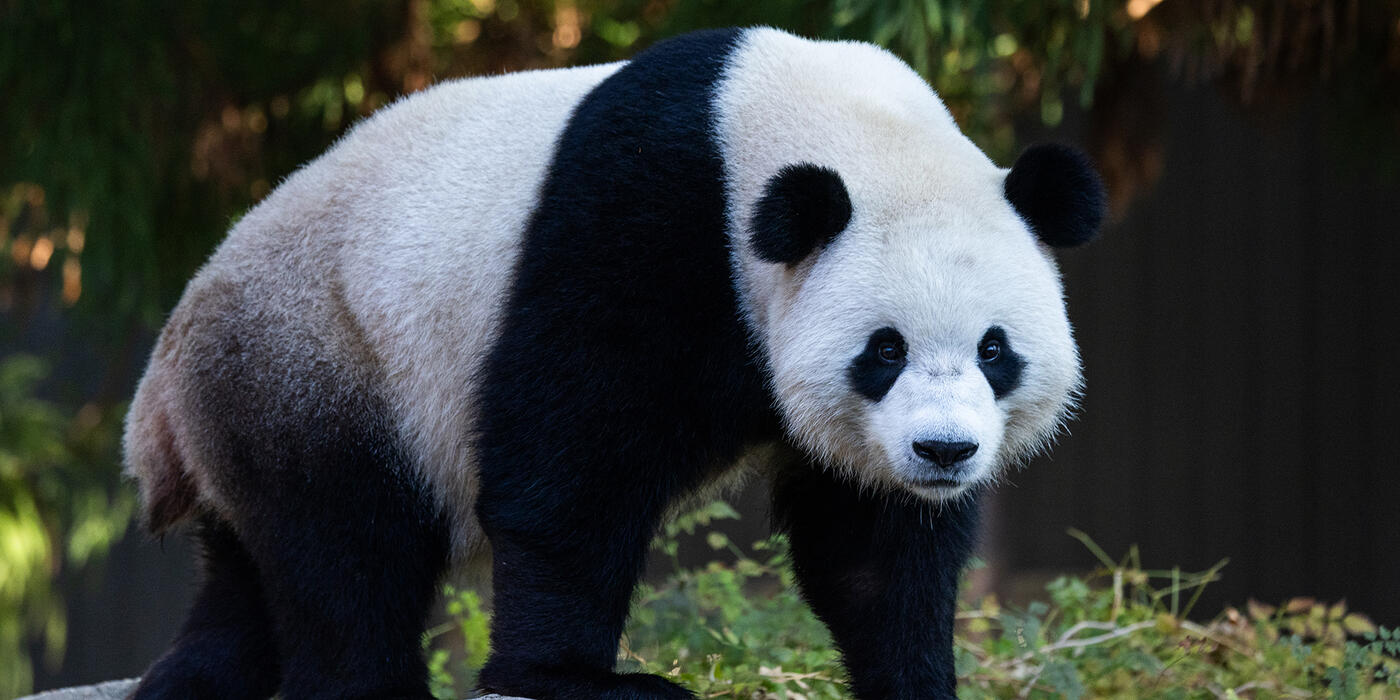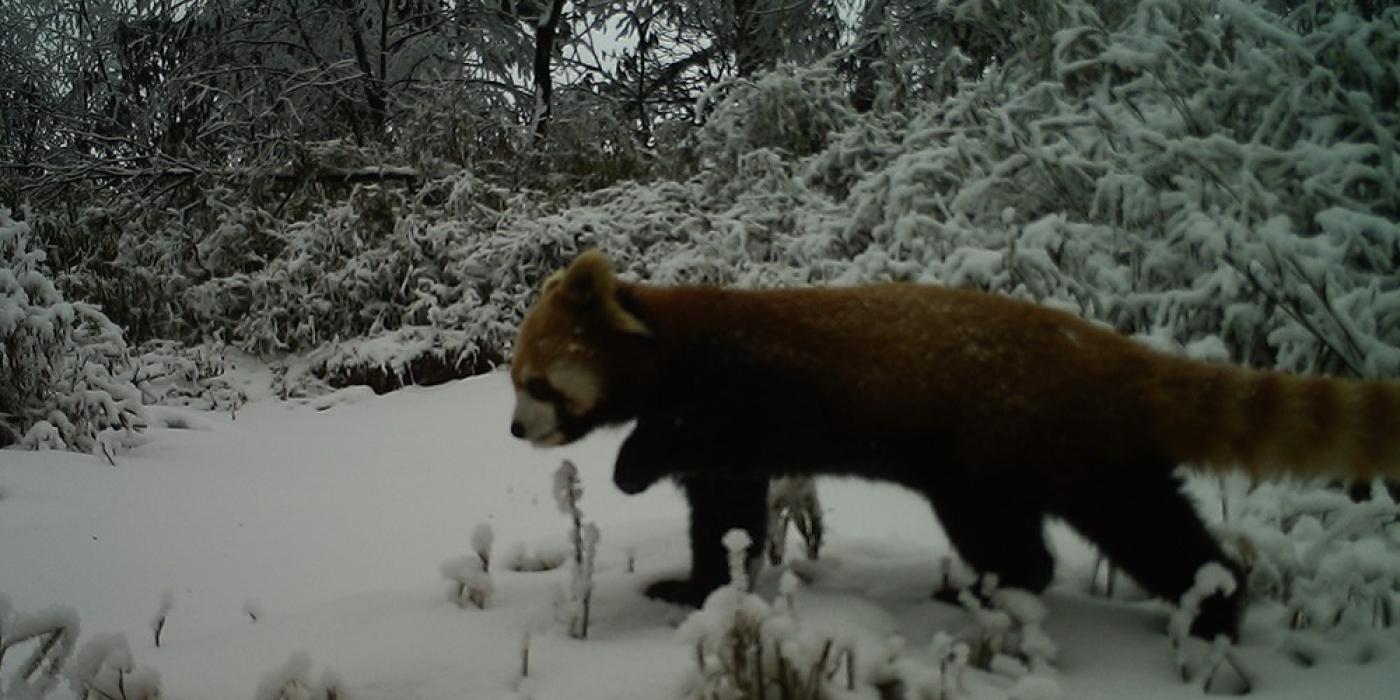Training Update: Sloth Bear Ultrasound
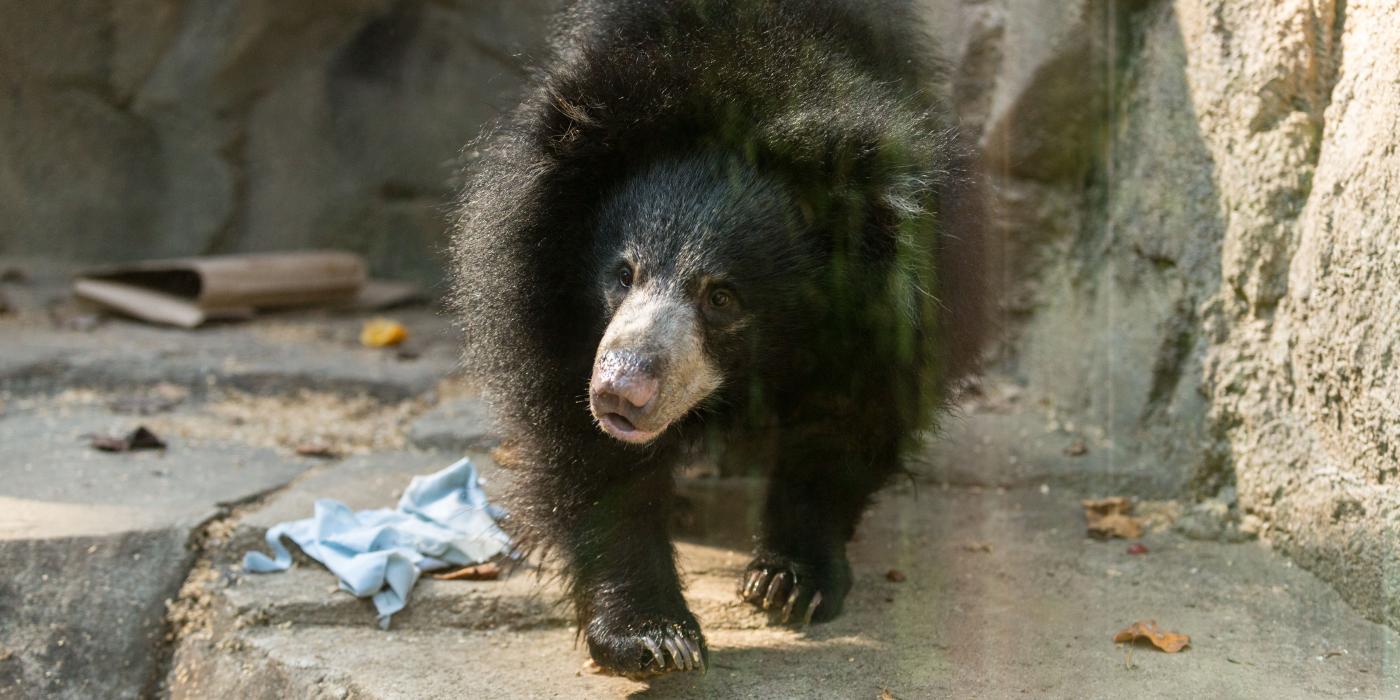
Is she or isn’t she? Excitement is in the air at Asia Trail, where the Zoo’s 5-year-old female sloth bear, Remi, may be expecting a cub! To monitor her for potential cub development, keepers are training Remi to voluntarily participate in ultrasounds. In this Q&A, animal keeper Stacey Tabellario shares some of the preparations that are taking place behind-the-scenes.
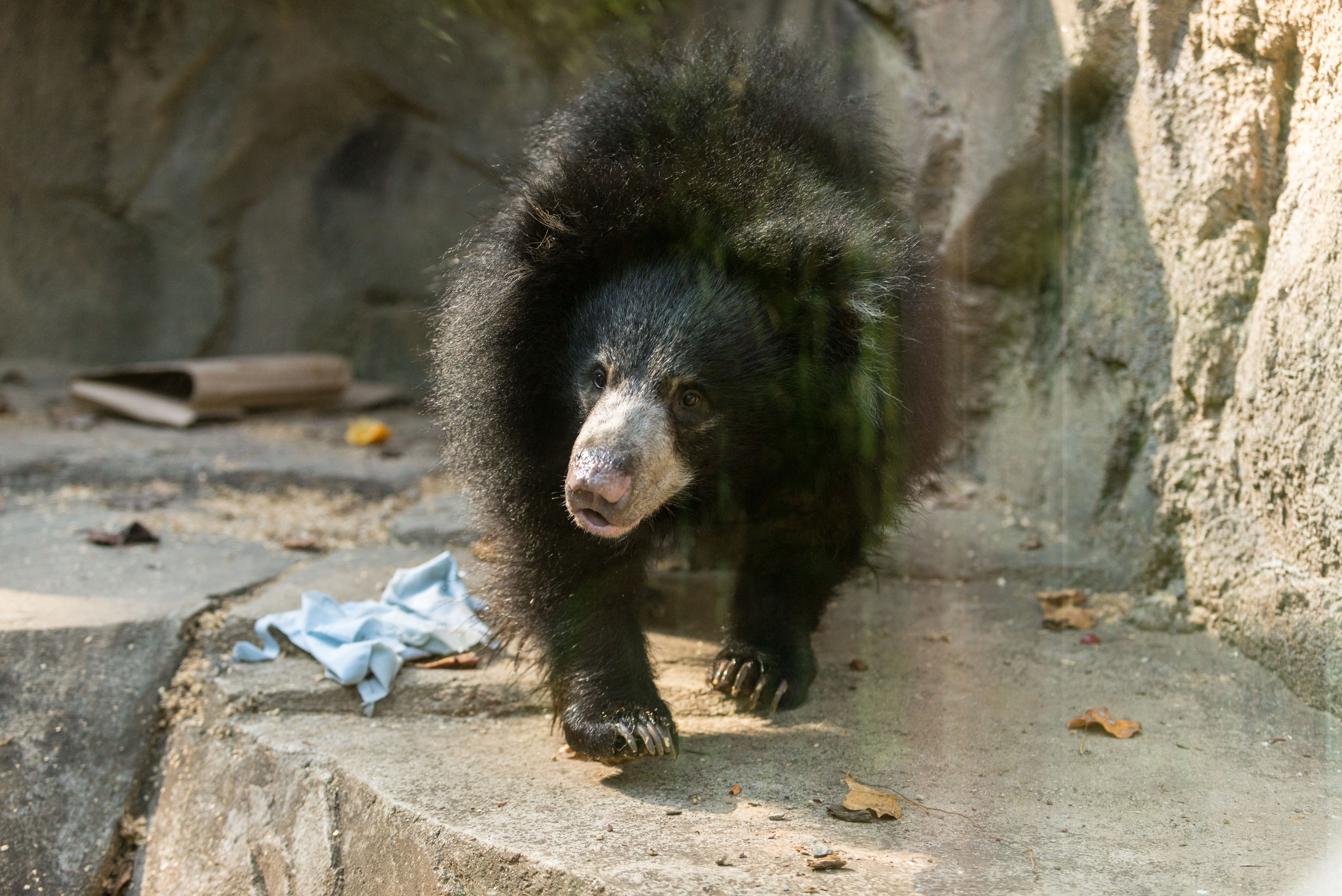
First things first: is Remi pregnant?
At this time, the answer is: we don’t know! Over the summer, our animal care team observed a lot of breeding attempts between Remi and our 4-year-old male sloth bear, Niko. Even if it turns out that they were not successful at producing cubs this year, we are encouraged that this pair seems to have a great relationship and should be successful in the future. Both Remi and Niko are still quite young, so they just need more practice breeding.
We hope that Remi is pregnant, but we are also rather guarded in our excitement. She would be a first-time mom, and she was hand-raised by keepers rather than by her mother. We are anxious to see what kind of mother she will be, but frequently even mother-reared animals don’t have surviving cubs the first time around. Either way, we want her to learn from her experience and know that, no matter the outcome, she has the potential to be a great mom in the future.
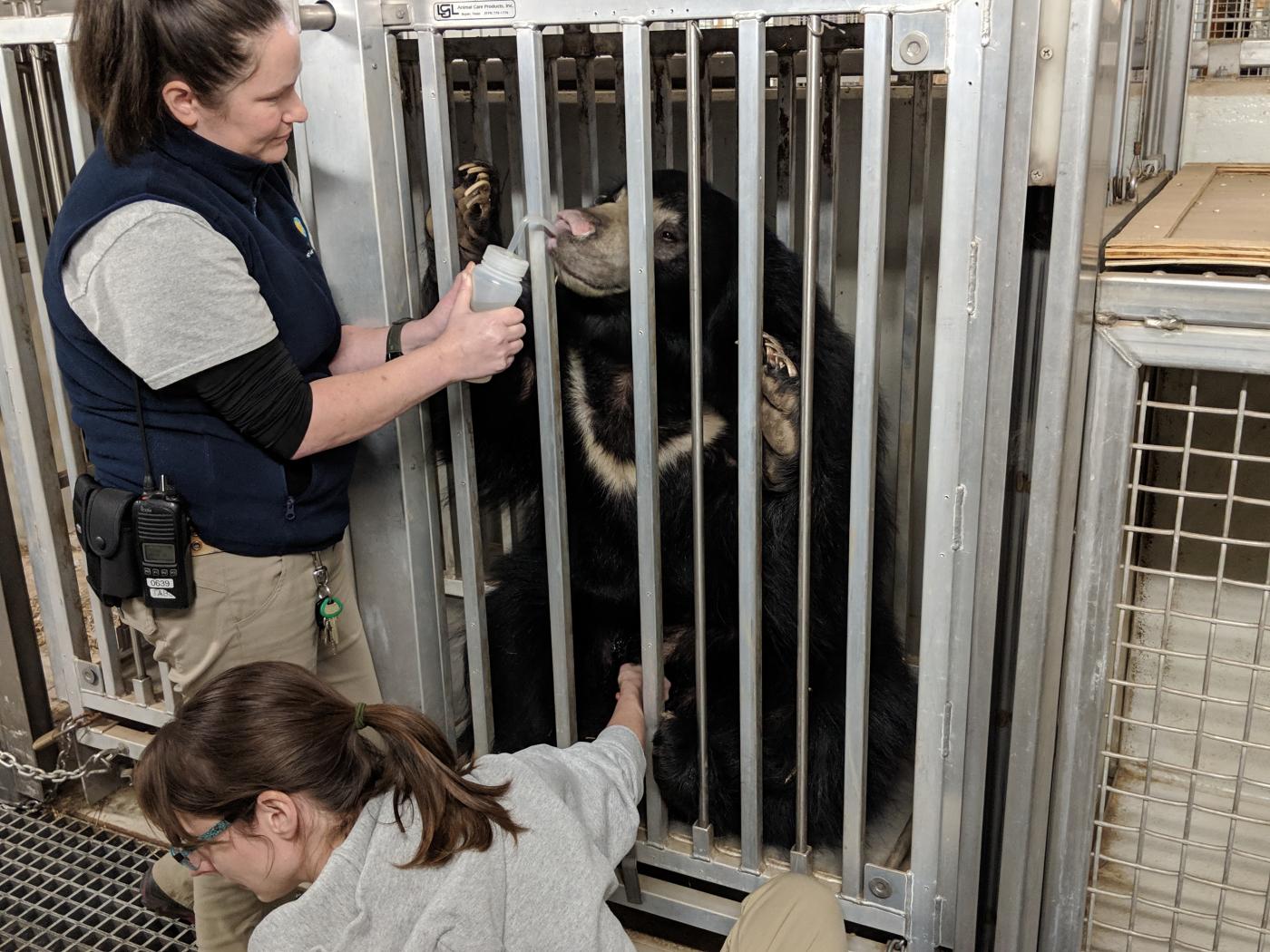
Why is it difficult to tell if a sloth bear is pregnant?
Like all bears—including giant pandas and Andean bears—sloth bears can experience psuedopregnancies. A pseudopregnancy occurs when a bear exhibits all of the physical and behavioral changes we would expect to see during pregnancy, but there is no fetal development.
Specifically, with a young bear like Remi, who was hand-reared by keepers, she may or may not exhibit the same behaviors as a pregnant bear that was mother-reared. So, we are closely watching Remi’s behaviors and any physical changes that are out of the ordinary.
One telltale sign that a bear could be pregnant is weight gain. Over the past several weeks, Remi has put on quite a considerable amount of weight despite the fact that the items and volume of her diet has been consistent. Near the end of a pregnancy or psuedopregnancy, some bears go off their food. Although Remi has been eating a little bit less, that behavior is also consistent with a change in the seasons. Even Niko’s eating habits have followed a similar “slow down” pattern. So, from assessing her appetite, we would not be able to confirm if she was pregnant.
Another sign of pregnancy is “denning up”—where Remi would find a place where she feels secure and could have some privacy from Niko. She spends most of the day resting, but that behavior also comes with the cold weather.
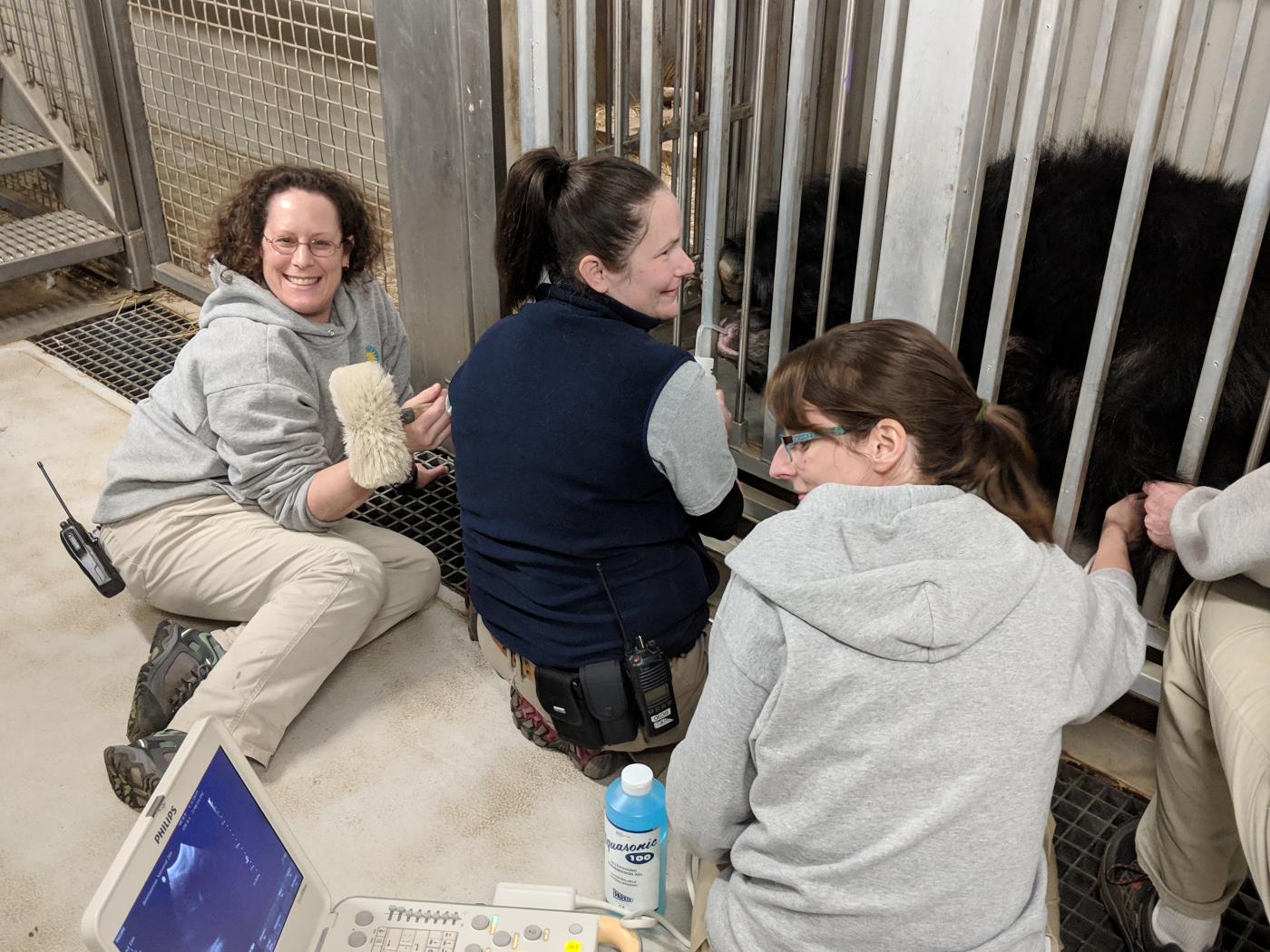
Why are you training Remi for ultrasounds?
The only way that we can prove that Remi is pregnant is through an ultrasound. The ultrasounds could prove that she is pregnant if we see a fetus. If we do not see a fetus, it does not necessarily mean that she is not pregnant. Our challenge is figuring out how we can train Remi to position her body in such a way that gives our veterinarians a clear view of her uterus.
What does the training entail?
Sloth bears are very intelligent and eagerly participate in husbandry training sessions. Remi, in particular, enthusiastically interacts with us and picks up behaviors quickly.
Through our routine husbandry training sessions, she is used to us touching her paws and other body parts while she is awake. In addition to training her to sit, stand or lay down on cue, we also needed to ensure she was comfortable with an ultrasound probe touching her belly and ultrasound jelly.
Luckily, Remi is a very fast learner, and it only took about a week to train each behavior. We use positive reinforcement training at the Zoo, which means that the animals have the opportunity to participate in training sessions or walk away. If they do the behavior asked of them, they receive a favorite food as a reward. Coconuts are one of Remi’s favorite treats, so we reward her with diluted coconut water every time she participates in an ultrasound. She laps it up! She also receives a heap of praise from keepers for her good behavior, and she seems to enjoy all of the attention.
Has the ultrasound revealed anything?
Although we’ve conducted a few ultrasounds now, we have not seen a fetus. In fact, we haven’t even seen her uterus. Since we cannot go into the enclosure with Remi, the trick is to train her to position her body in such a way that the veterinarians can safely place the ultrasound probe through a portal in the training chute. We have tried several positions—sitting on a stool, laying against the mesh and sitting upright—but the vets have not been able to detect anything. It may also be that she is not pregnant, and therefore her uterus is not growing. However, we continue to conduct bi-weekly ultrasounds with Remi and practice with a fake probe during the weeks in between to keep her behaviors sharp. She has an excellent memory and does them with ease.
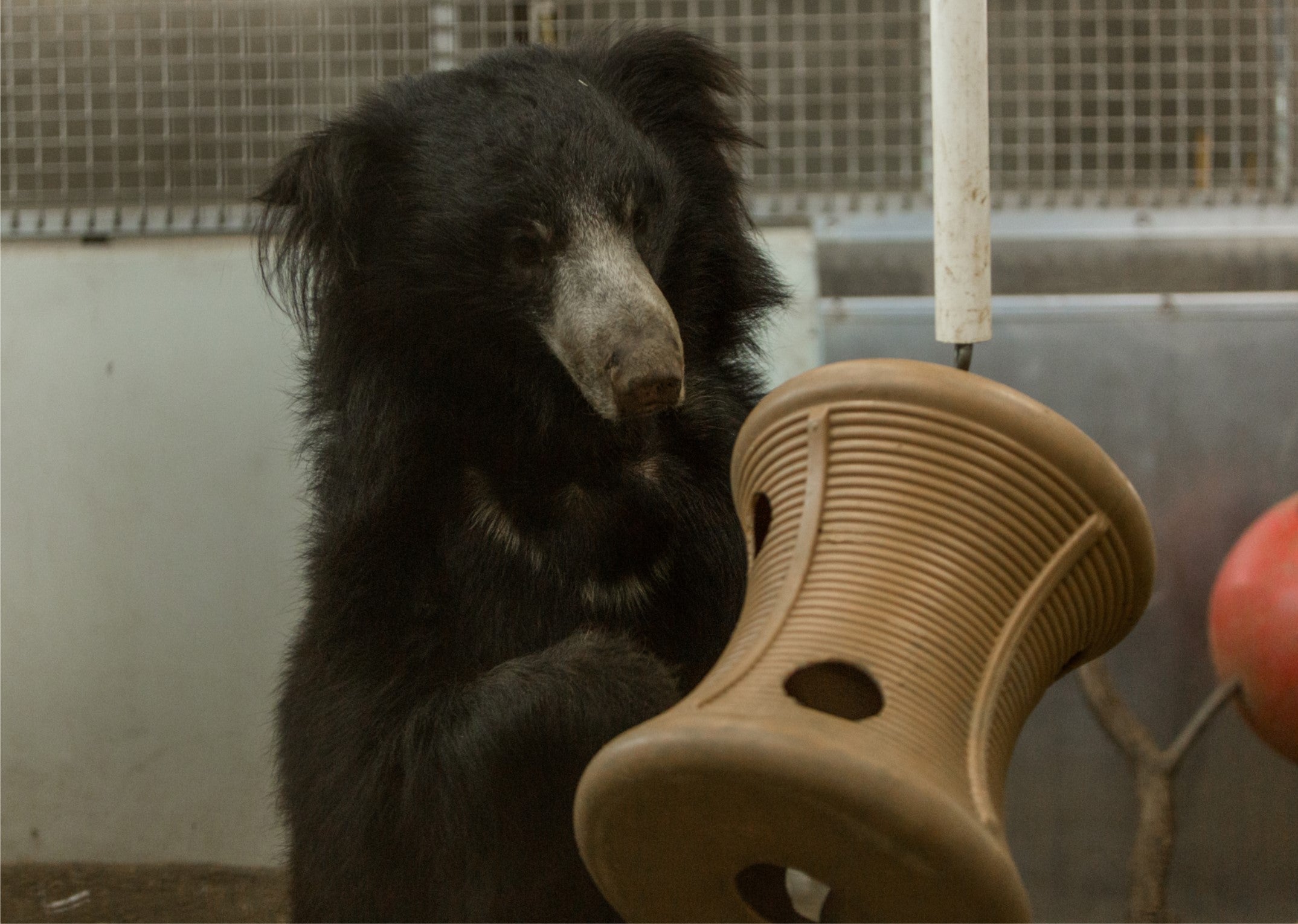
Has Niko’s behavior changed toward Remi?
Interestingly, Niko has been very interested in smelling Remi’s feces! It may seem funny or a little gross to us, but he is able to pick up subtle changes in her hormones that we cannot. Remi’s hormones would change regardless of whether she is experiencing a pregnancy or pseudopregnancy, but Niko’s reaction is an indication that something is going on with her. Apart from that, he is behaving like his normal sweet and goofy self.
On another note, although Remi did not have any reaction to the ultrasound jelly, Niko did. When we put them back together, he was very interested in the strange substance on her belly and kept following her around to get a closer look!
Why is the Zoo hoping to breed Niko and Remi?
Sloth bear populations—both globally and in North America—could use a boost. Currently, there are less than 10,000 sloth bears in the world, and only about 30 sloth bears in the Association of Zoos and Aquariums’ Species Survival Plan. To add some genetic diversity to the population, four bears came to the United States from Germany in fall 2017. One of those bears was Niko, who has been a wonderful addition to our Zoo family and a great companion to Remi.
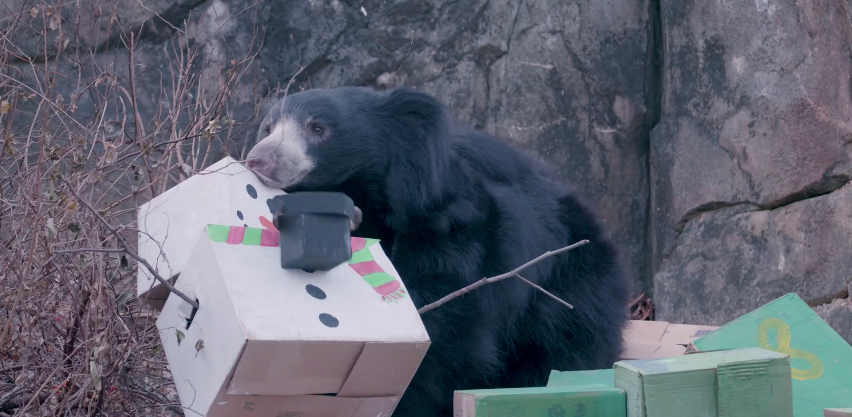
What do you love most about working with sloth bears?
People may be surprised to learn that sloth bears have a great sense of humor. They enjoy playing with one another—and with their keepers—and just the right amount of silliness can even prompt them to laugh. You can hear it if you are close enough to them. One of Remi’s favorite games is a form of peek-a-boo. She’ll find a piece of cloth enrichment, whether a sheet, comforter, or even a canvas bag, and puts it over her face and blows at me through the mesh. If I blow back it gets a laugh every time!
This story was featured in the February 2019 issue of National Zoo News.Related Species:

